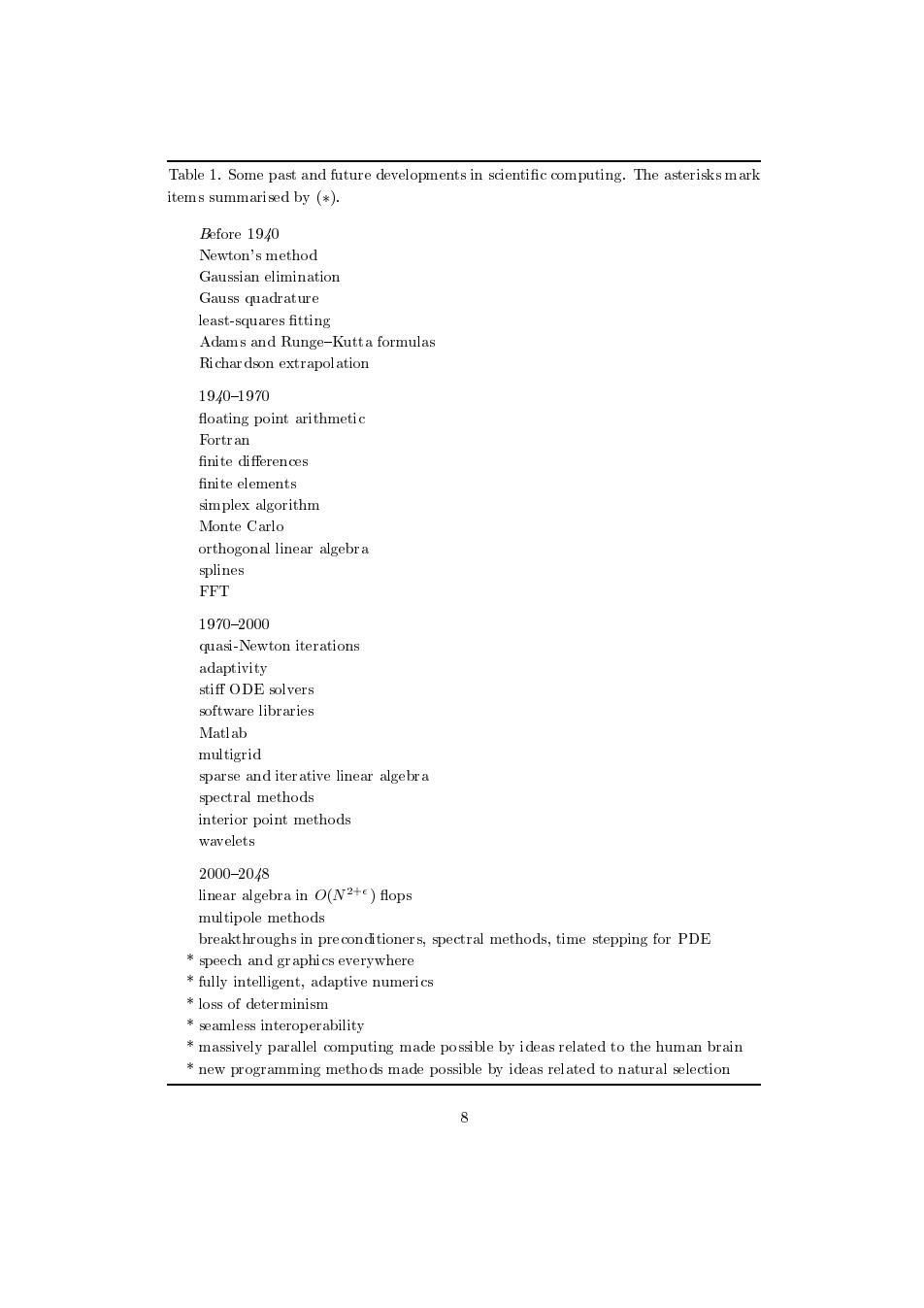正在加载图片...

Table 1.Some past and future developments in scientific computing.The asterisks mark items summarised by (*) Before 1940 Newton's method Gaussian elimination Gauss quadrature least-squares fitting Adams and Runge-Kutta formulas Richar dson extrapolation 1940-1970 foating point arithmetic Fortr an finite differences finite elements simplex algorithm Monte Carlo orthogonal linear algebr a splines FFT 1970-2000 quasi-Newton iterations adaptivity stiff ODE solvers software libraries Matlab multigrid sparse and iter ative linear algebr a spectral methods interior point methods wavelets 2000-2048 linear algebra in O(N2+)flops multipole methods breakthroughs in preconditioners,spectral methods,time stepping for PDE speech and gr aphics everywhere fully intelligent,adaptive numerics loss of determinism seamless interoperability massively parallel computing made possible by ideas related to the human brain new programming methods made possible by ideas related to natural selection 8Table 1. Some past and future developments in scienti
c computing. The asterisks mark items summarised by (). Before 1940 Newton's method Gaussian elimination Gauss quadrature least-squares
tting Adams and Runge{Kutta formulas Richardson extrapolation 1940{1970 oating point arithmetic Fortran
nite di
erences
nite elements simplex algorithm Monte Carlo orthogonal linear algebra splines FFT 1970{2000 quasi-Newton iterations adaptivity sti
ODE solvers software libraries Matlab multigrid sparse and iterative linear algebra spectral methods interior point methods wavelets 2000{2048 linear algebra in O(N2+ ) ops multipole methods breakthroughs in preconditioners, spectral methods, time stepping for PDE * speech and graphics everywhere * fully intelligent, adaptive numerics * loss of determinism * seamless interoperability * massively parallel computing made possible by ideas related to the human brain * new programming methods made possible by ideas related to natural selection 8�